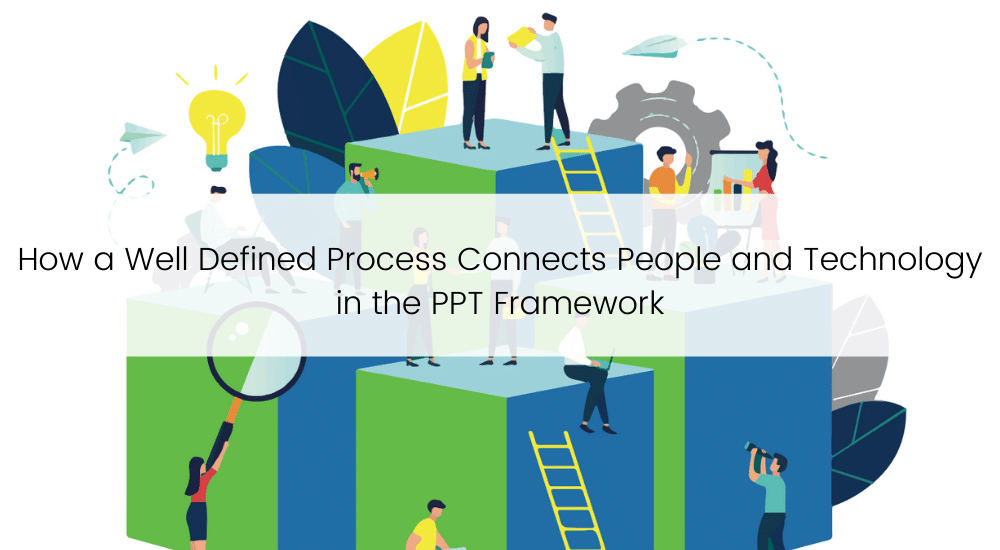
The People, Process, and Technology framework, which originated in the 1960s, remains an essential business strategy. As a tool used to improve organizational efficiency between employees and operational systems, the PPT framework aims to create a work dynamic that encourages company profitability.
Understanding the important relationship between people, processes, and technology drives optimal business functionality and maps. Strategic goals provides organizations with the visibility needed to drive high-performing teams towards optimizing business functionality.
The problem is 90% of organizations fail to execute their strategies properly.
People perform daily work, and technology provides the tools needed for success. The process integrates the people with the technology. Let’s explore the importance of the process element of the PPT framework.
Why is Process so Important in the PPT Framework?
Processes help frame product implementation in terms of training, workflow, and instructions to measure success. According to BMC, “A process is a series of well-defined, repeatable steps with predictable results.”
A process connects people and technology. In other words, the process is the workhorse designed to help frame success. Processes focused on a series of actions or steps are needed to help people make effective decisions.
Good processes require documenting steps and results. Successes and failures need to be evaluated and lessons learned should be incorporated into the business plan. Plan for business processes to evolve with shifting markets, technological availability, and workforce changes.
Consider these key steps when considering the implementation of new processes:
- Ensure that employees understand workflow considerations
- Provide proper training on the new processes
- Give instructions
- Create review systems for each process
- Measure the success of different processes
Review existing business processes and attempt to eliminate unnecessary ones to improve organizational productivity and efficiency. Effective processes should help drive increased efficiency throughout daily business operations.
Adapting Processes to Organizational Needs
Businesses must maintain a sense of adaptability when it comes to implementing new processes. The vastly different business outcomes during the pandemic underscore this point. Companies whose processes enabled them to pivot quickly to remote work had higher success rates of maintaining business operations, while other businesses crumbled due to an inability to adapt to change.
Be sure to augment processes that adequately reflect changes in current business markets and environments. Gartner stated, “Product planning is the first step in the product management process. It’s critical for product managers to spend the time in the planning stage and go into enough depth to make sure they are set up for success.”
Processes focused on products and services should be scaled appropriately within rapidly changing markets. With multifunctional capabilities, products act as the “front office” and processes as the “back office” support. Instead of maintaining the status quo, digital businesses should align with a future-based approach.
How Process Fits into the Framework
The process portion of the PPT framework creates a symbiotic relationship connecting both people and technology. Developing well-defined processes increases efficiency and solves business problems.
Decision-makers should listen to employees and include their feedback to make meaningful changes over time. Market demands change over time, and processes should be updated accordingly.
Review processes with appropriate stakeholders, identifying gaps and issues. Analytics also improve business processes and data integration techniques. Each contributing element of the PPT framework plays a crucial role in developing harmonious business objectives. Leadership must closely analyze both people and technology to develop effective processes.
Why Choose TBC to Help with Process Integration
As a managed service provider—TBConsulting is experienced in helping companies understand their position on the technological spectrum and map realistic action plans to move them closer to where they want to be.
Our business and IT experts focus on your business problems and deliver actionable strategies designed to help your business succeed. We engage with our clients at a strategic level to ensure technology initiatives support business outcomes. Our solutions facilitate growth, reduce risk and complexity, and protect revenue streams. For more information on how we can help, please feel free to contact TBConsulting today.
.png)

